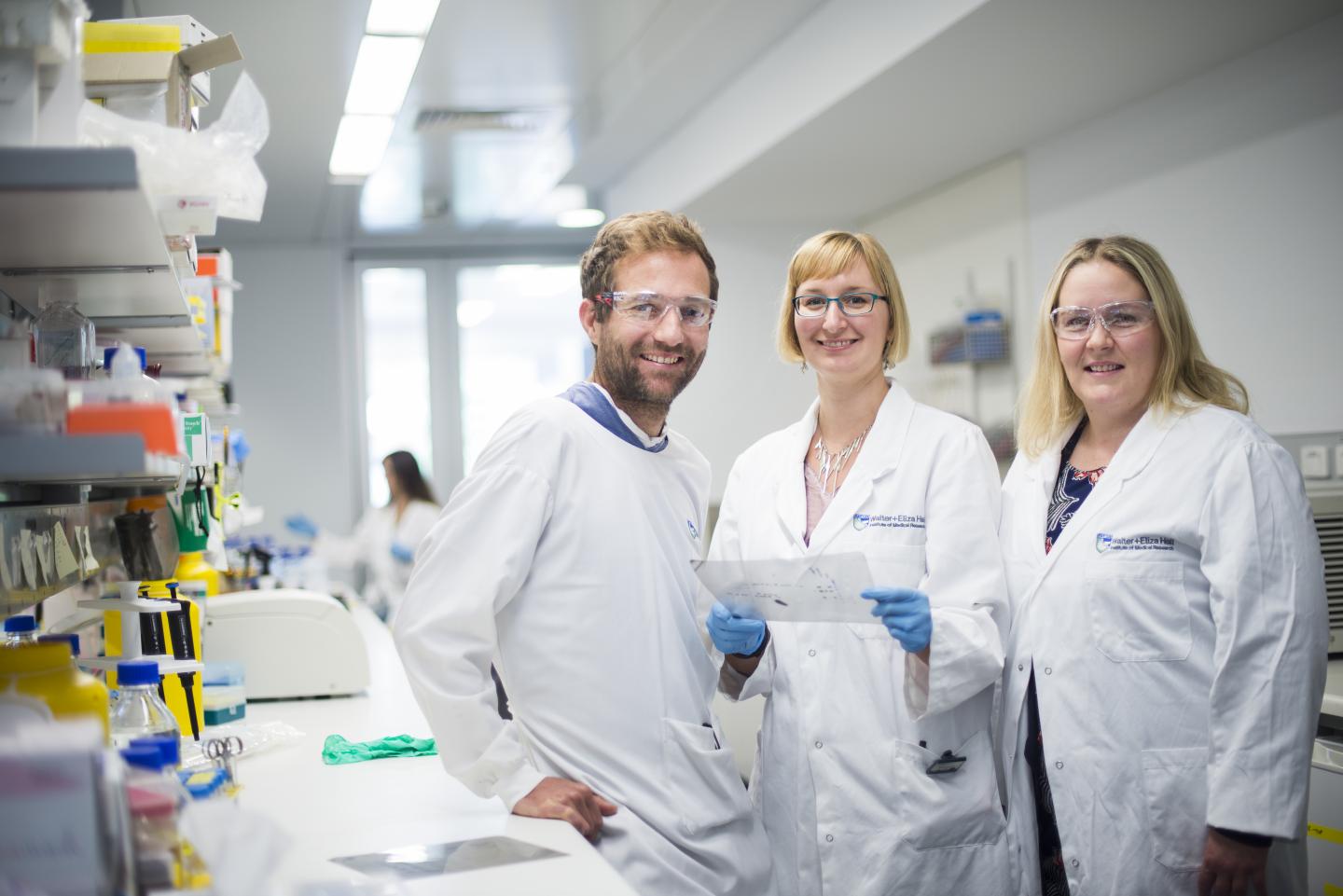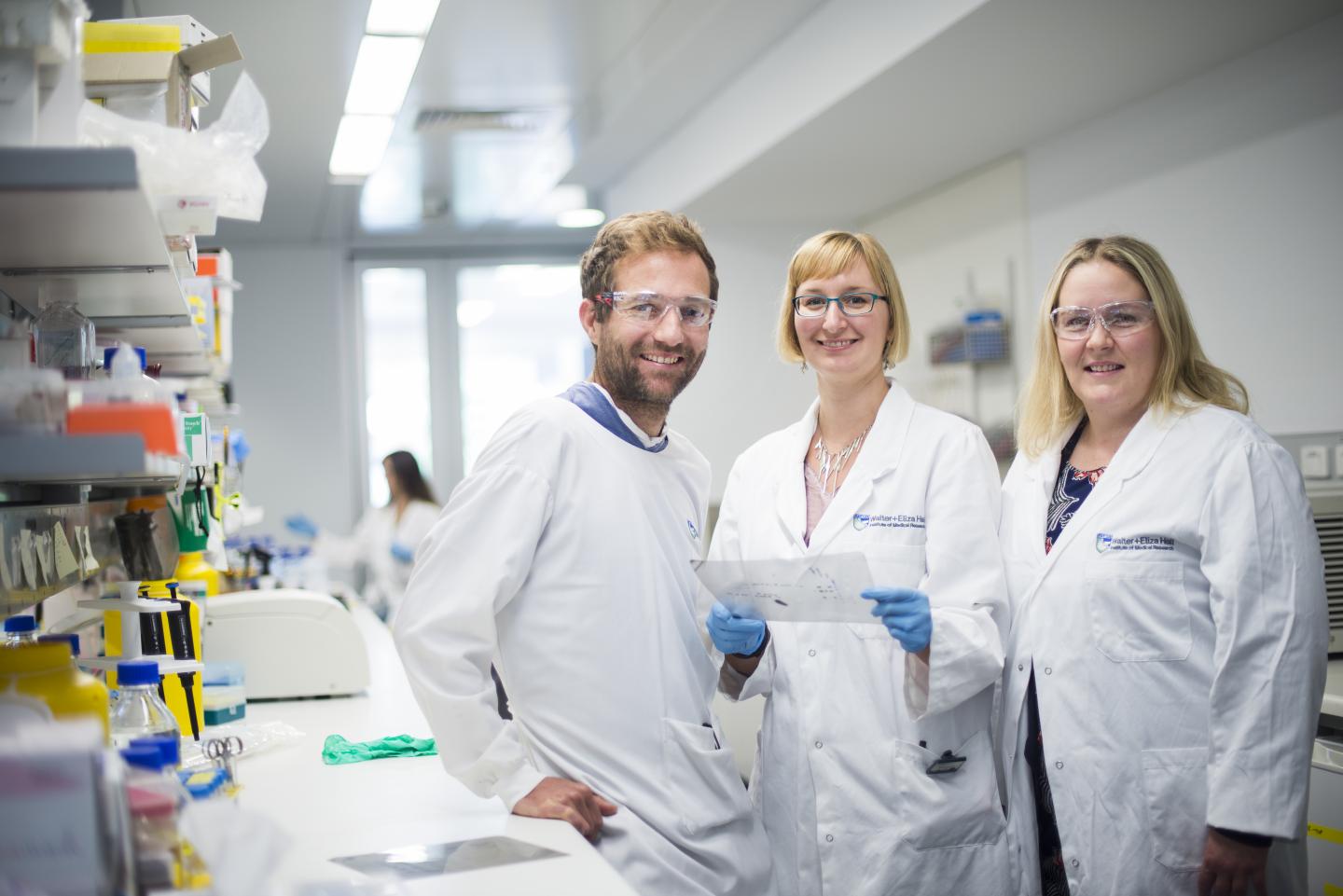
Credit: Walter and Eliza Hall Institute of Medical Research
Institute scientists have revealed a potent inflammatory molecule released by dying cells triggers inflammation during necroptosis, a recently described form of cell death linked to inflammatory disease.
The discovery could lead to new and existing medicines that target the molecule being investigated as a way of treating inflammatory diseases, such as psoriasis and inflammatory bowel disease.
Dr Lisa Lindqvist, Dr Kate Lawlor, Dr James Vince and PhD student Ms Stephanie Conos led research that showed interleukin-1 beta (IL-1) triggers inflammation during necroptotic cell death.
Necroptosis is important for protecting us against infections, by sacrificing infected or diseased cells 'for the greater good'.
However, necroptosis can become inappropriately or excessively activated, triggering damaging inflammation that leads to inflammatory disease.
Dr Lindqvist said the discovery challenged a long-standing dogma that inflammation triggered by necroptosis was a byproduct of dead cell debris. "Our research has pinpointed that, during necroptosis, dying cells release IL-1, a potent inflammatory signal," Dr Lindqvist said.
"Now that we have discovered IL-1 is the 'root' of the inflammation associated with necroptosis, we speculate that targeting this molecule could be an effective way of treating inflammatory diseases."
Future treatments
The findings suggest that targeting IL-1 could suppress inflammation associated with multiple inflammatory diseases, including multiple sclerosis, ischemia-reperfusion injury, atherosclerosis, liver disease, pancreatitis, psoriasis, inflammatory bowel disease, and infectious diseases.
"Our research suggests that existing drugs that block IL-1 might be useful in treating these diseases," Dr Lindqvist said.
"We are also exploring how IL-1 is signalled to be secreted during necroptosis, so that we can create new drugs to stop its release and reduce inflammation to treat inflammatory diseases."
###
The research was an international effort with collaborators Dr Kate Schroder and Dr Kaiwen Chen at the University of Queensland, and Professor Gabriel Núñez from the University of Michigan Medical School, US. The research was supported by the Australian National Health and Medical Research, the Australian Research Council, the US National Institutes of Health, the Australian Government and the Victorian State Government Operational Infrastructure Scheme. Ms Conos' PhD studies were conducted at the Walter and Eliza Hall Institute, as the University of Melbourne's Department of Medical Biology.
The research findings were published in the journal Proceedings of the National Academy of Sciences.
Media Contact
+61 475 751 811
[email protected]
61-475-751-811
http://www.wrair.army.mil





